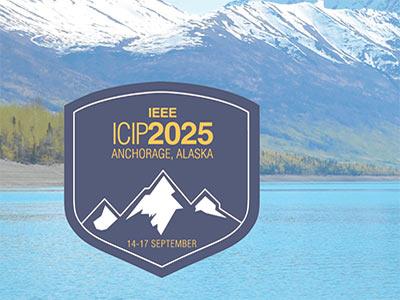
- Read more about Anonymous Supplement - CONTEXTLOSS: CONTEXT INFORMATION FOR TOPOLOGY-PRESERVING SEGMENTATION
- Log in to post comments
Anonymous Supplement for the research paper CONTEXTLOSS: CONTEXT INFORMATION FOR TOPOLOGY-PRESERVING SEGMENTATION.
- Categories:
 29 Views
29 Views
- Read more about 1 Anonymous Supplement - CONTEXTLOSS: CONTEXT INFORMATION FOR TOPOLOGY-PRESERVING SEGMENTATION
- Log in to post comments
1 Anonymous Supplement for the research paper CONTEXTLOSS: CONTEXT INFORMATION FOR TOPOLOGY-PRESERVING SEGMENTATION
- Categories:
 18 Views
18 Views
- Read more about Supplement - CONTEXTLOSS: CONTEXT INFORMATION FOR TOPOLOGY-PRESERVING SEGMENTATION
- Log in to post comments
Supplement for the research paper CONTEXTLOSS: CONTEXT INFORMATION FOR TOPOLOGY-PRESERVING SEGMENTATION
- Categories:
 96 Views
96 Views
- Read more about Semi-supervised Infrared Meibomian Gland Segmentation with Intra-patient Registration and Feature Supervision
- Log in to post comments
Low-cost and high-precision infrared meibomian gland segmentation is an important basis for early diagnosis and monitoring of many ocular diseases in ophthalmic clinical practice. To address the issue of limited labeled data, we propose a novel semi-supervised meibomian gland segmentation approach. By leveraging the prior knowledge of the patient each image belongs to, intra-patient registration is taken to generate diverse and lifelike pseudo-labeled data.
- Categories:
 54 Views
54 Views
- Read more about A Needle In A (Medical) Haystack: Detecting A Biopsy Needle In Ultrasound Images Using Vision Transformers
- Log in to post comments
Needle localization in ultrasound images is pivotal for the successful execution of ultrasound-guided core needle biopsies. Automating the needle detection process can decrease the procedure time and lead to a more precise diagnosis. In this article, we introduce an automatic method for detecting the core needle and determining its trajectory in 2D ultrasound images.
- Categories:
 24 Views
24 Views
- Read more about Unrolled Projected Gradient Algorithm for Stain Separation in Digital Histopathological Images
- Log in to post comments
This paper introduces a novel optimization approach for stain separation in digital histopathological images. Our stain separation cost function incorporates a smooth total variation regularization and is minimized by using a projected gradient algorithm. To enhance computational efficiency and enable supervised learning of the hyperparameters, we further unroll our algorithm into a neural network. The unrolled architecture is not only more efficient for solving the stain separation problem, but also allows to design a highly interpretable and flexible method.
- Categories:
 20 Views
20 Views
- Read more about Reducing motion artifacts in brain MRI using vision transformers and self-supervised learning
- 1 comment
- Log in to post comments
Vision Transformer (ViT) has become a state-of-art in many vision tasks, owing to its great scalability and promising performance. In Magnetic Resonance Imaging (MRI), motion continues to be a major problem, which degrades the image quality and the corresponding disease assessment. The purpose of this work is to assess a ViT-based MRI motion correction method. Self-supervised learning was further incorporated to enhance the motion correction effects.
- Categories:
 21 Views
21 Views
- Read more about Flattening Singular Values of Factorized Convolution for Medical Images
- Log in to post comments
Convolutional neural networks (CNNs) have long been the paradigm of choice for robust medical image processing (MIP). Therefore, it is crucial to effectively and efficiently deploy CNNs on devices with different computing capabil- ities to support computer-aided diagnosis. Many methods employ factorized convolutional layers to alleviate the bur- den of limited computational resources at the expense of expressiveness.
- Categories:
 31 Views
31 Views
- Read more about Texture-Unet: A Texture-Aware Network for Bone Marrow Smear Whole-Slide Image Region of Interest Segmentation
- Log in to post comments
Bone marrow smear cytology involves observing and analyzing the morphological features of bone marrow cells, and identifying regions of interest (ROI) where the cells are morphologically clear and evenly distributed is a crucial part of this process. However, existing deep learning methods for selecting ROI in whole-slide images (WSI) of bone marrow smears have overlooked the unique characteristics of the smears, particularly the texture information, resulting in inadequate performance.
chenjian.pdf
- Categories:
 34 Views
34 Views
- Read more about An Accurate and Efficient Neural Network for OCTA Vessel Segmentation and a New Dataset
- Log in to post comments
Optical coherence tomography angiography (OCTA) is a noninvasive imaging technique that can reveal high-resolution retinal vessels. In this work, we propose an accurate and efficient neural network for retinal vessel segmentation in OCTA images. The proposed network achieves accuracy comparable to other SOTA methods, while having fewer parameters and faster inference speed (e.g. 110x lighter and 1.3x faster than U-Net), which is very friendly for industrial applications. This is achieved by applying the modified Recurrent ConvNeXt Block to a full resolution convolutional network.
- Categories:
 29 Views
29 Views